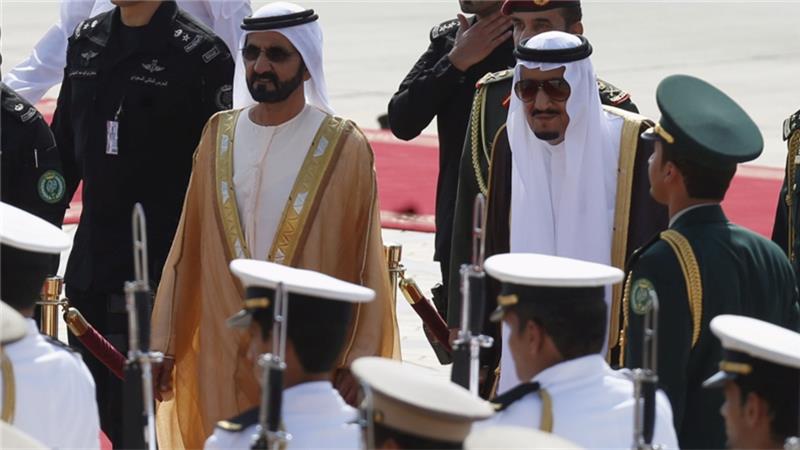The rules of inter-Gulf relations are stability and accord while the exceptions are dispute and disparity. Throughout decades, these have continued to be the foundation for establishing unique ties among Gulf states.
Since Operation Decisive Storm – that has represented a turning point in the Arab region – was launched in 2015, Saudi-UAE relations have been growing in an unprecedented way not only at the official level but also at the popular level as well based on strategic interests of Riyadh and Abu Dhabi in a way that reinforces stability in the Gulf and Arab region.
Yet, in the past two years attempts to target Saudi-UAE rapprochement have not stopped via hundreds of fake stories including rumors in the media and fabricated Arab and Western reports that have failed and showed not to be credible – These attempts reveal that they are organized pursuits from parties and countries, which have been damaged by the rapprochement between the two Gulf capitals.
On Tuesday, the UAE concluded a meeting bringing together Saudi Arabia and the UAE during which dozens of teams consisting of 150 officials and experts from both sides discussed ten means to achieve integration. Ten more are expected to be discussed in an upcoming meeting in Riyadh.
This reveals a quest by the two countries’ leaderships to have ideal and exceptional ties and to move to a new integration. The meeting is one of the first activities resulting from the Saudi-UAE Coordination Council, which was announced in May 2016 in Jeddah – the ceremony was attended by Custodian of the Two Holy Mosques Saudi King Salman bin Abdulaziz and Sheikh Mohammed bin Zayed Al Nahyan, Crown Prince of Abu Dhabi and Deputy Supreme Commander of the UAE Armed Forces.
This unique meeting, which represents a qualitative transformation in Saudi-UAE ties, is a new and practical step in the pursuit of Saudi-UAE integration. It is also a natural reaction to the attempts to sabotage the strategic coalition by coming up with tedious stories on “hidden agendas.”
But why are these parties discontent by the unique ties? Why all these steady attempts to harm the integration? Which parties benefit from the relapse of relations between the two countries?
If Saudi Arabia and UAE have the strongest Arab economies and the most advanced arms, represent one social fabric, have leaderships keen for cooperation and peoples aiming for additional integration not to mention that they share common attitudes regarding regional and international topics, then it is certain that a party is harmed from this accord, and the continuity of this coalition is not for its best interest.
First Iran and Second the Muslim Brotherhood are mostly harmed by such unity. The Muslim Brotherhood was struck several times and is struggling to remain active. It also returned to carrying out secret activities and has no other option but to spread rumors and chaos and to create tension in the Arab and Gulf Street.
As for Iran, the Saudi-UAE agreement damages its policies in attempting to export its revolution to the Arab region. By being an evil country, Iran has sought to target Saudi-UAE relations.
However, these attempts have been unable to change the reality. On the contrary the two countries are still keen to reinforce integration.
A while ago, I asked an Emirati official about the rumors on Riyadh-Abu Dhabi relations. He had the following answer: “Relations are at their best. As for the evil attempts to cause a rift, then the optimal response is to move on in reinforcing and integrating ties for a stable future in the Gulf and region.”
The more Riyadh and Abu Dhabi consolidate relations, the greater attempts to damage them. The positive thing is that all these pursuits massively failed – the Saudi Emirati train keeps moving forward.
